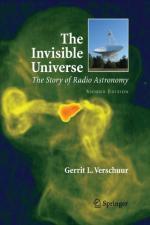|
This section contains 1,809 words (approx. 7 pages at 300 words per page) |

|
Overview
In the 1960s a Cambridge University radio astronomer named Martin Ryle (1918-1984) discovered ways to combine the information from several radio telescopes to simulate a much larger instrument. These advances in radio astronomy helped pave the way for instruments such as the Very Large Array in New Mexico and techniques such as very long baseline interferometry. These helped to turn radio astronomy into an incredibly valuable scientific tool that has given profound insights into some of the most exciting phenomena in the universe, including supernovae, quasars, the Big Bang, and star formation.
Background
In the early 1930s engineers from Bell Laboratories set up large antennae to study ship-to-shore communications. When these antennae consistently picked up static and hissing that...
|
This section contains 1,809 words (approx. 7 pages at 300 words per page) |

|


